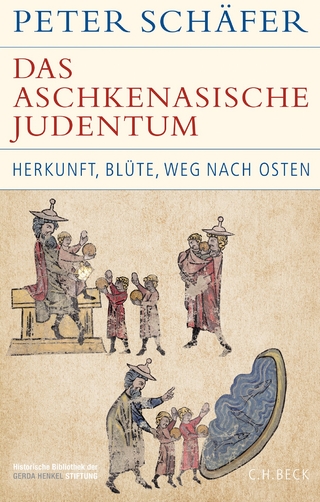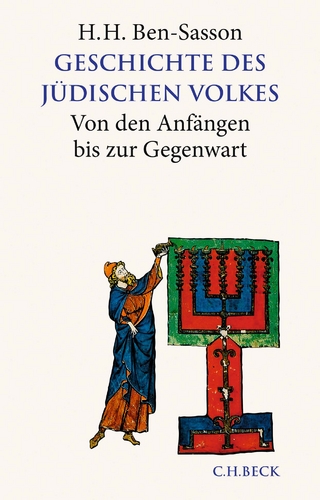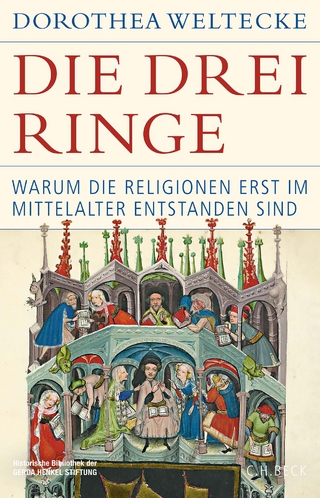
Fatimid Cosmopolitanism
I.B. Tauris (Verlag)
978-0-7556-5778-0 (ISBN)
- Noch nicht erschienen (ca. Mai 2025)
- Versandkostenfrei innerhalb Deutschlands
- Auch auf Rechnung
- Verfügbarkeit in der Filiale vor Ort prüfen
- Artikel merken
I.B. Tauris in association with the Institute of Ismaili Studies.
Historical documentation and archaeological material have revealed that the Fatimids once presided over a diverse, multicultural state composed of Muslims, Christians, Jews and other religious traditions, as well as people from a wide range of ethnic backgrounds.
Such diversity stimulated intercultural contact and exchange across the Mediterranean, the Middle East and the Indian Ocean. This open access book sheds light on the cosmopolitan environment that was engendered during Fatimid rule and how the Fatimids impacted the region. The Fatimids have often been overshadowed in academic research with attention placed more broadly on other dynasties, namely, the Abbasids, Mamluks or Ottomans. Across 22 chapters, this book provides a comprehensive contribution to Fatimid studies that updates and extends the existing scholarship. It addresses numerous Fatimid topics including: an analysis of state decrees and da’wa activities; the examination of key texts and treatises; the study of Fatimid theology and ceremonies; and the presentation of archaeological data. Bringing together both established and new voices in the field, the volume reveals the crucial role of the Fatimids and especially how intercultural dialogue and imperial contestations have impacted history, material culture, politics and religions.
The ebook editions of this book are available open access under a CC BY-NC-ND 4.0 licence on bloomsburycollections.com. Open access was funded by Islamic Publications Ltd.
Gregory Bilotto is Associate Lecturer at Saint Mary's University, UK, and a research consultant at the Institute of Ismaili Studies, UK. He received his PhD from SOAS, University of London, UK. Farhad Daftary is Governor and Director Emeritus of the Institute of Ismaili Studies, UK. Shainool Jiwa is Associate Professor at The Institute of Ismaili Studies, UK.
Introduction, Gregory Bilotto, Saint Mary's University, UK and the Institute of Ismaili Studies, UK
Section One – Religion and Statecraft
Chapter 1. Fatimid Public Pronouncements: Messages from a Shi’i Dynasty to a Cosmopolitan Empire, Paul Walker, The University of Chicago, US
Chapter 2. The Reign of the Fatimid Imam-caliph al-Hakim bi-Amr Allah: Historiographical Considerations, Shainool Jiwa, The Institute of Ismaili Studies, UK
Chapter 3. Who was Nasir-i Khusraw’s Patron in Yumgan? Notes on the Political Vectors of the Late Fatimid Da’wa, Daniel Beben, Nazarbayev University, Kazakhstan
Chapter 4. The Fatimid Kitab al-Majalis wa’l-Musayarat as Responsa to Internal Controversy and External Propaganda, Hasan al-Khoee, The Institute of Ismaili Studies, UK
Chapter 5. Ismaili Neoplatonism: The Cosmopolitan Legacy of the Fatimid Ismaili Da’wa, Khalil Andani, Augustana College, US
Section Two – Ceremony and Symbolism
Chapter 6. Back to Black Background: The Rediscovery of Black Background and the Aesthetic of Darkness—A Global Visual Spectacle during the Fatimid Age, Avinoam Shalem, Columbia University, US
Chapter 7. ‘Displaying the Hidden: Fatimid Public Texts in Floriated Kufic’ Fatimid Cosmopolitanism: History, Material Culture, Politics, and Religion, Yasser Tabbaa, formerly University of Memphis, US
Chapter 8. The Cosmopolitan Ecosystem of the Festival Costumes of 516/1122, Paula Sanders, Rice University, US
Chapter 9. The Power of Six—Astral, Solomonic, and Imami Imagery in Fatimid Art, Bernard O’Kane, The American University in Cairo, Egypt
Chapter 10. The Fatimid Crescent: Understanding a Complex Religious-Political Cosmos through Lunar Symbolism, Ali Asgar Alibhai, The University of Texas at Dallas, US
Chapter 11. (Re)-making Time, (Re)-making Place: Some Considerations on Early Fatimid Ta’wil and Sacred Space, Jamel Velji, Claremont McKenna College, US
Section Three – Art and Archaeology
Chapter 12. Seventeen Years of Archaeological Excavations in Cairo: What we really know about the Ismaili Capital-city and Fustat during the Fatimid Period, Stéphane Pradines, Aga Khan University, UK
Chapter 13. ‘The Work is Blessed, Unique’: the Fatimid Silver Casket of Sadaqa b. Yusuf, Anna Contadini, SOAS University of London, UK
Chapter 14. Fatimid Jewellery Hoards from Palestine in the Light of the Cairo Geniza Documents, Ayala Lester, Israel Antiquities Authority, Israel
Chapter 15. The Fatimid Rock Crystal Ewers—Innovation or Variation? A Historical and Iconographical Investigation, Marcus Pilz, Veste Coburg Art Collections, Germany
Chapter 16. Reassessing Fatimid Figuralism: Ettinghausen, Grabar, and a Mediaeval Lustre Workshop, Jennifer Pruitt, University of Wisconsin-Madison, US
Chapter 17. A Fatimid Mermaid, Doris Behrens-Abouseif, SOAS University of London, UK and Juan de Lara, USC Dornsife, US
Section Four – The Fatimids Reconsidered
Chapter 18. The Fatimids and the Indian Ocean: Evidence from the Book of Curiosities, Yossef Rapoport, Queen Mary University of London, UK
Chapter 19. ‘Referring to Ibn Al-Haytham’s Scientific Legacy in Islamic Art History: An Untold Problem’ ,Valérie Gonzalez, Leighton House Museum, UK
Chapter 20. Wladimir Ivanow and Fatimid Studies, Farhad Daftary, The Institute of Ismaili Studies, UK
Chapter 21. The Modern Rediscovery of Fatimid Artistic and Architectural Legacies in Egypt,
Dina Bakhoum, Independent Researcher, Egypt
Chapter 22. A Dynasty for All Seasons. The Fatimids in Modern and Contemporary Cosmopolitanism Discourses, Delia Cortese, Middlesex University, UK
| Erscheint lt. Verlag | 15.5.2025 |
|---|---|
| Zusatzinfo | 80 b&w images |
| Sprache | englisch |
| Maße | 156 x 234 mm |
| Themenwelt | Geschichte ► Teilgebiete der Geschichte ► Religionsgeschichte |
| Geisteswissenschaften ► Religion / Theologie ► Islam | |
| ISBN-10 | 0-7556-5778-0 / 0755657780 |
| ISBN-13 | 978-0-7556-5778-0 / 9780755657780 |
| Zustand | Neuware |
| Haben Sie eine Frage zum Produkt? |
aus dem Bereich


